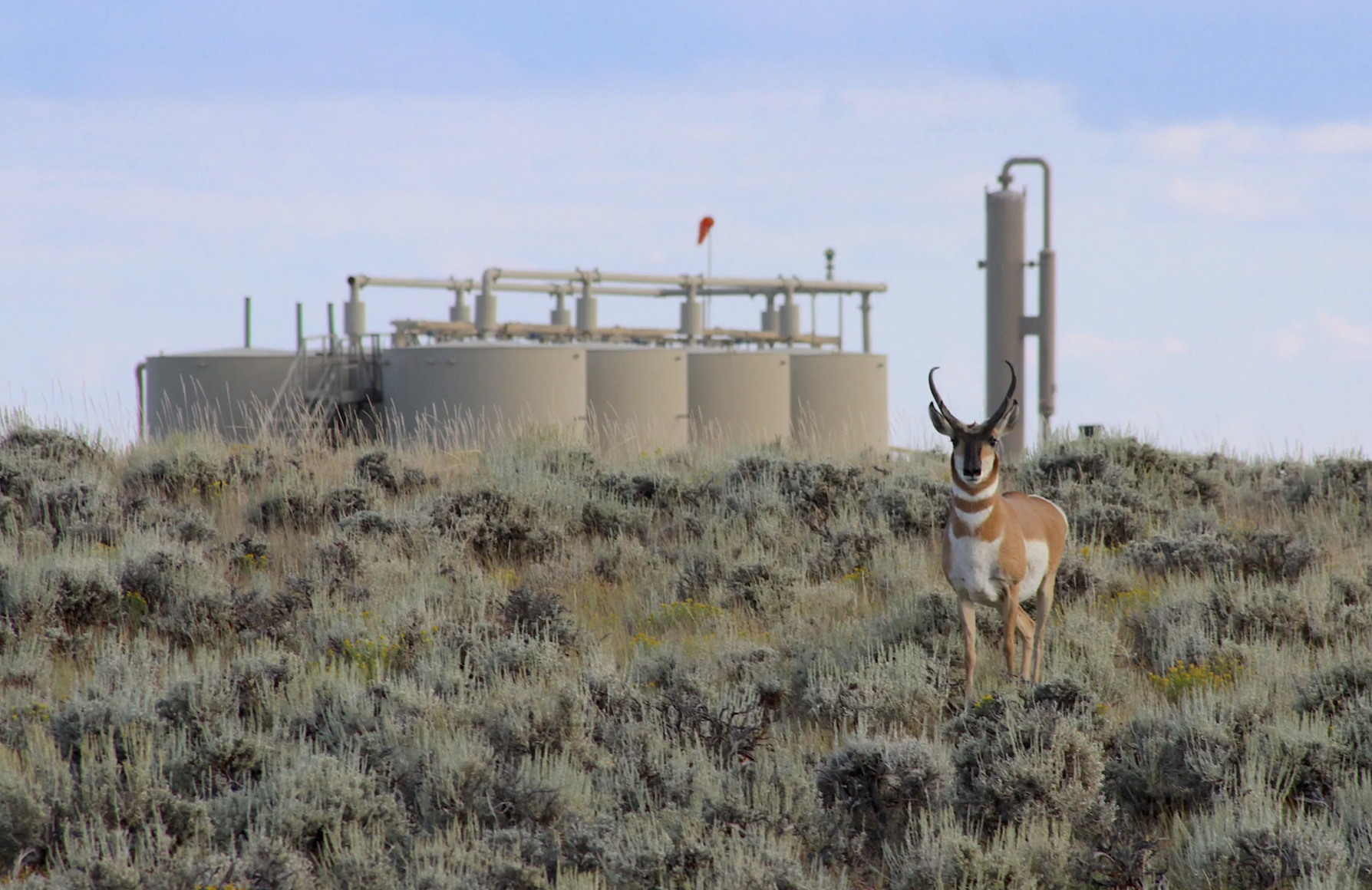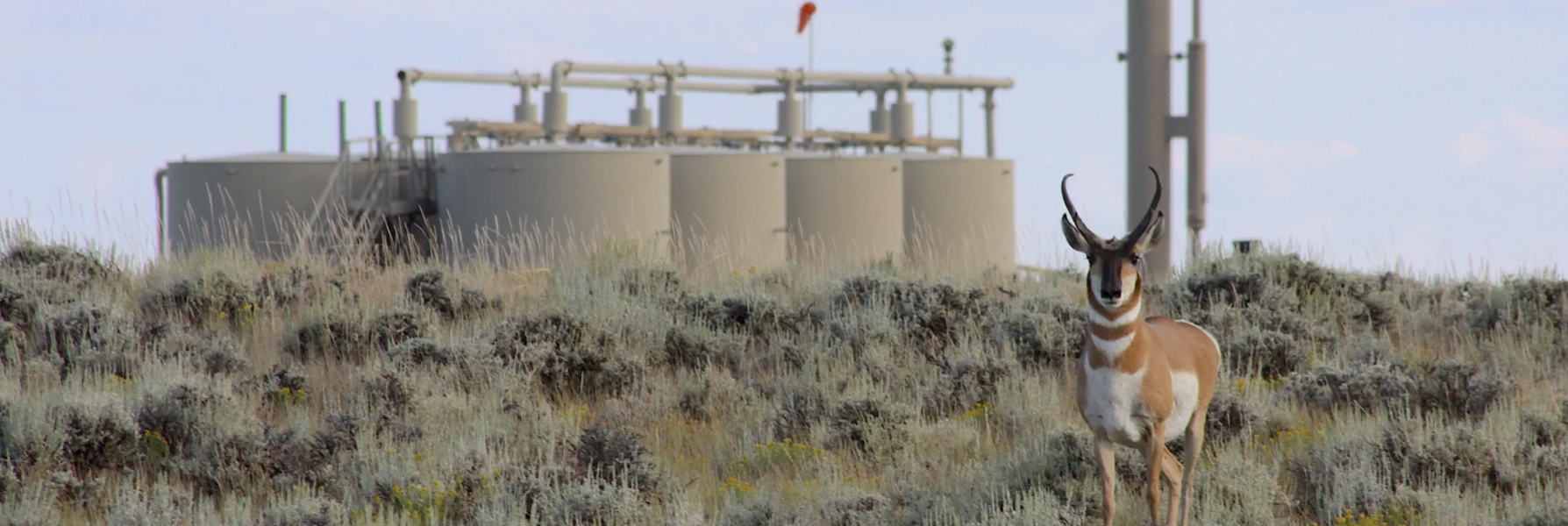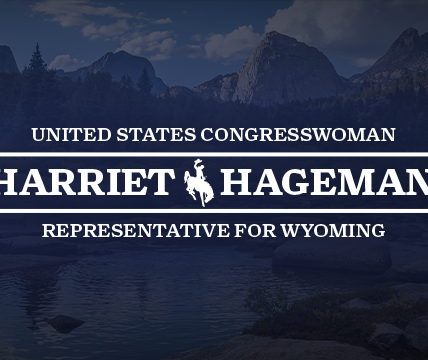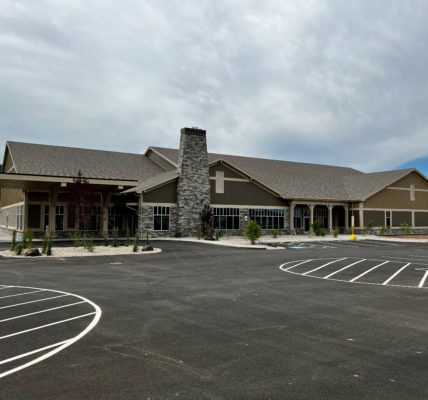Court OKs 3,500 gas wells amid ‘Path of the Pronghorn,’ sage grouse winter habitat

• Jonah Energy’s Normally Pressured Lance field in Sublette and Sweetwater counties clears the federal appeals court 5 years after the Bureau of Land Management signed off on the decision.
By Mike Koshmrl, WyoFile.com
A panel of appellate judges has rejected a suite of claims brought by environmental advocates trying to halt a 220-square-mile gas field planned for a sagebrush expanse housing a famous pronghorn migration path and Wyoming’s largest-known sage grouse winter concentration area.
The developer, Jonah Energy, now has more clarity about whether to commence drilling 3,500 gas wells in the Normally Pressured Lance field, which was approved via a Bureau of Land Management environmental review seven years ago.
In its ruling, the 10th Circuit Court of Appeals affirmed what U.S. District Judge Scott Skavdahl decided a year ago: That the National Environmental Policy Act prohibits uninformed decisions, but allows for environmentally harmful decisions. In the 10th Circuit, judges Timothy Tymkovich, Nancy Moritz and Veronica Rossman quoted precedent from a 1989 U.S. Supreme Court ruling in their 31-page decision, writing that NEPA, “merely prohibits uninformed—rather than unwise—agency action.”
The statute, Tymkovich, Moritz and Rossman wrote, “does not even require agencies to promulgate environmentally friendly rules.”
That was the takeaway from a decision that denied all four claims brought by the plaintiffs: Western Watersheds Project, the Center for Biological Diversity and the Upper Green River Alliance.
“We’re disappointed in the ruling,” Western Watersheds Project Executive Director Erik Molvar said. “The judges ruled that the Bureau of Land Management was justified in not considering in great detail the impacts to the Path of the Pronghorn migration, the herd of pronghorn that summer in Grand Teton National Park. And [they ruled] it was perfectly permissible to consider impacts to pronghorn only at the broadest possible scale, the scale of the Sublette Herd.”
The dispute over pronghorn — which took center stage during oral arguments — comes at a time when the famous migration treading through the Green and Snake River basins is under siege from a host of pressures, ranging from a deadly winter that shrunk the herd by 75%, to housing developments infringing on the herd’s habitat.
The state of Wyoming recently offered a section of land in a bottleneck portion of the migration for oil and gas leasing, and it went to the high bidder, Kirkwood Oil and Gas, for $19 an acre — though that sale has been stalled. Meanwhile, the state has dragged its feet at designating the migration path, which could buffer the Path of the Pronghorn from intense drilling in places like the NPL field.
Arguments shot down
In their appeal, the environmental groups argued that the BLM violated federal environmental law by failing to take a “hard look” at how the gas field would impact the Path of the Pronghorn.
Tymkovich, Moritz and Rossman weren’t persuaded.
“The [g]roups misunderstand the regulations,” the appellate justices wrote. “They do not require the Bureau to pay special attention to special resources.”
The 10th Circuit panel found that analyzing the larger Sublette Herd was adequate. And the harm the gas field, which sits 25 miles south of Pindale, would cause was properly detailed, they wrote.
“The [environmental review] squarely confronted the ‘displacement’ and ‘disrupt[ion]’ of pronghorn ‘migration patterns’ and discussed the ‘[d]egradation’ of ‘migratory routes’ that ‘connect crucial winter range and other pronghorn habitats in the analysis area and the region,’” the opinion reads.
Other arguments brought by the plaintiffs concerned the phasing of development within the 140,000-acre gas field, and alleged NEPA violations for inadequate data gathered about impacts to Grand Teton National Park and sage grouse winter concentration areas.
The NPL gas field overlaps about half of a complex of sage grouse wintering ground that housed an estimated 2,000 birds in 2015. Highly protected sage grouse “core” habitat has also been kept out of the gas field — and it isn’t being added through an ongoing revision process, leaving birds in the project area vulnerable.
In denying the plaintiffs’ argument, the appellate judges found the BLM vetted grouse impacts adequately: “The Bureau clearly possessed enough information to anticipate how development would affect the sage grouse and [winter concentration areas] under the selected action.”
The agency’s proclamation that the gas field would cause sage grouse “various adverse effects” was enough, they wrote.
Likewise, the panel of judges didn’t buy the argument that the BLM failed to take a hard look at how the project would indirectly impact Grand Teton National Park by harming pronghorn. The judges faulted the plaintiffs for not raising those concerns when the environmental impact statement for the NPL field was being reviewed, and they pointed out the agency did acknowledge indirect interference with “recreation experiences outside the Project Area.”
What’s next?
Paul Ulrich, vice president of government and regulatory affairs for Jonah Energy, declined an interview for this story. It’s Jonah’s policy to not comment on litigation, he said, and there’s not a “clear picture” for the gas field moving forward.
Some activity, however, is underway — and road building and even some drilling was taking place while the project was tied up in the courts.
Records from the BLM’s Pinedale Field Office show that drilling was occurring within the project area as early as 1994. Although the agency’s record of decision for the 3,500-well project was approved in 2018 and litigated shortly thereafter, judges never put a stop to activity in the disputed field.
From the BLM, WyoFile obtained Jonah Energy’s application-to-drill documents for well pads within the field last winter. At that time, there had been 18 total submitted applications since the decision was published, 11 of which had been approved. Visits to coordinates of several of those approved pads show that, in places, the sagebrush has been scraped and ground leveled to accommodate Jonah Energy’s industrial operations.
“Where are we now with NPL?” BLM-Wyoming Deputy Director Brad Purdy said. “We are doing site-specific NEPA, which basically is going to be [applications to drill].”
Through that process, he said, stipulations are imposed that are intended to protect wildlife like sage grouse and big game and other natural resources.
If natural gas market conditions ripen, Jonah Energy has the latitude to greatly increase the pace. Wells can be constructed at a rate of up to 350 per year, with an average of 10 drill rigs working at any one time, according to the gas field’s final environmental impact statement. At the time of its approval, the gas field was expected to generate an estimated $17.8 billion over 40 years.
Although they’ve sustained successive losses in court, the project’s opponents haven’t abandoned the fight.
“There’s always the option to request an en banc review, which would involve additional judges and not just the three we happened to draw,” Western Watersheds Project’s Molvar said. “There are other options for appealing a 10th Circuit ruling, but that’s the one that I would think that would be most likely.”
Meantime, Upper Green River Alliance Director Linda Baker bemoaned what she sees as more blows to the “internationally significant gem” of the Path of the Pronghorn and the valley’s “iconic sage grouse.”
“It’s really sad,” Baker said. “And it’s tragic that the federal Bureau of Land Management and the state of Wyoming governor’s office fails to recognize what an incredibly priceless gem we have here.”
WyoFile is an independent nonprofit news organization focused on Wyoming people, places and policy.





